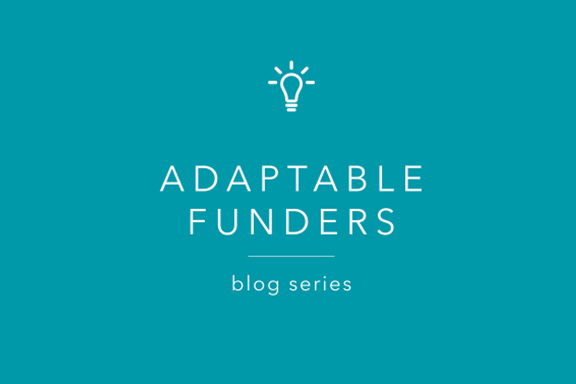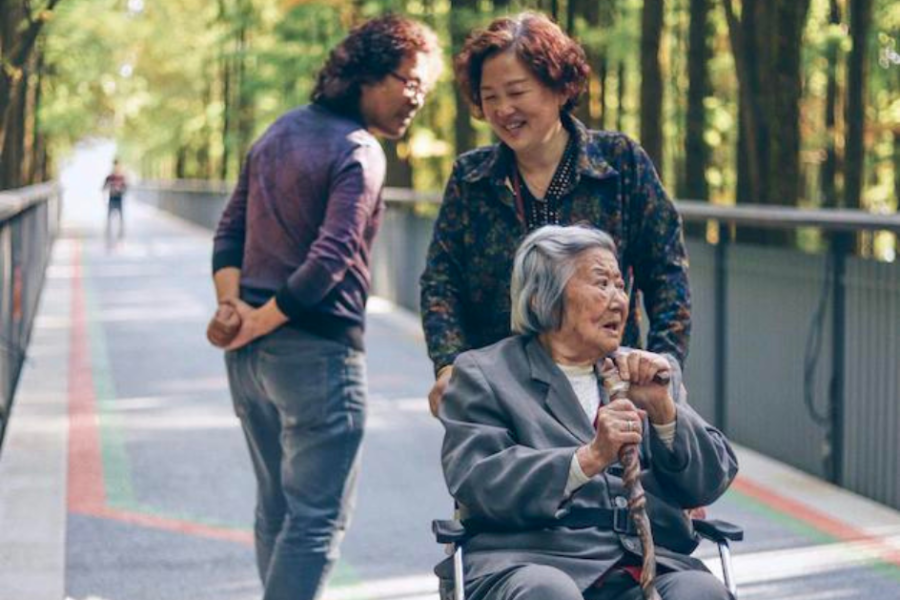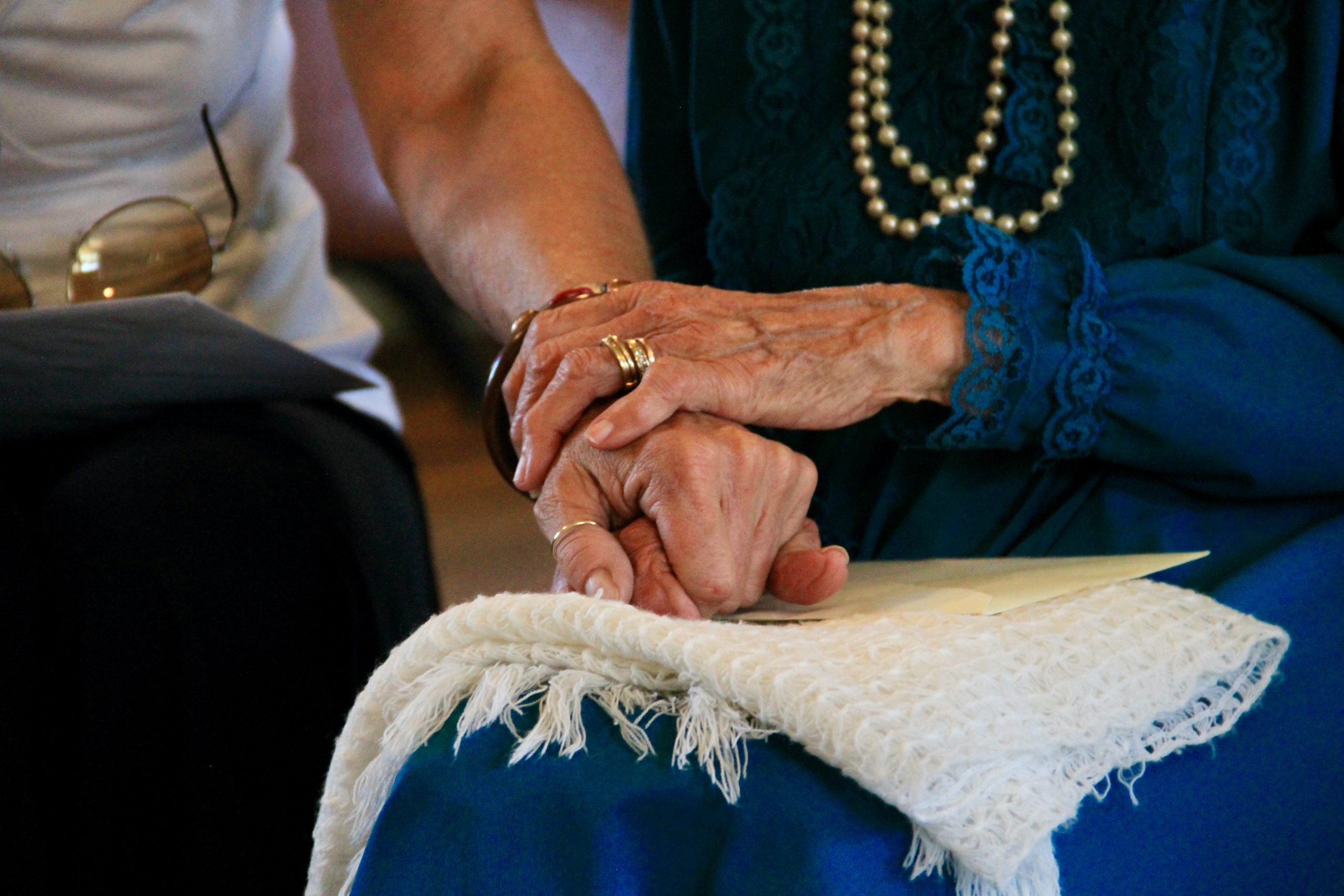
In our Adaptable Funder series, we are highlighting practices from a range of funders that enabled flexibility and efficacy in the face of the crises of 2020, and lessons learned for more powerful philanthropy, no matter the area of focus. Health funders, by their nature, are on the frontlines in support of particularly vulnerable populations and offer unique perspectives for all of us to consider. They have long been keenly aware of the deep inequities and vast challenges COVID-19 laid bare, and when the pandemic hit, they were among the first to rethink and to rework processes and strategies to aid those sliding into an ever-deepening crisis.
For this post, I sat down with President Nora OBrien-Suric, Vice President of Programs Diane Oyler, and Senior Program Officer for Caregiving Ken Genewick of the Health Foundation for Western and Central New York (HFWCNY). The organization serves 16 counties in western and central New York, with offices in Buffalo and Syracuse. The two regions are not contiguous and include rural and urban communities with broadly diverse socioeconomic and racial populations. The Foundation, which will celebrate its 20th anniversary in 2022, delivered its newest five-year strategic plan to its board in March 2020, just days before the COVID-19 pandemic shut down the U.S. They quickly discovered that in that process they had tackled prescient questions: How do we strategically serve a vastly diverse population? How do we create significant lasting change? And as important, how will the plan hold up over time – and through the unfolding of an unimaginable reality?
—
TPI: What guided you as you prepared your current (2020-2025) strategic plan?
NORA: We have always focused on the health of the most vulnerable. Since the Foundation’s early years, we have focused on children 0 to 5 impacted by poverty, and older adults with limited access to services. When we realized a lot of grantees needed help for their own sustainability, we added community health capacity as a third primary focus. Then, later, we also began addressing the wide-reaching issues around family caregivers. For us, preparing our current plan was a strategic sharpening. It was less about changing who or what we focus on, and more about how we are doing the work. We started in 2019 with an environmental scan, collected information, and spoke with grantees and community leadership, using a staff and trustee workgroup to provide direction.
The critical question was: Is a focus on health and poverty good enough? We cover all marginalized groups, but if we don’t say the causes of so many issues are systemic racism, are we not doing the job we should be with our grantmaking or internal policies? Through this discussion, we explicitly recognized race as a root cause and factor underlying disparities in health, income, and well-being for many people in our regions. We were preparing to announce our new vision just before the COVID-19 pandemic began. Of course, our focus immediately shifted away from our public announcement in order to meet the most critical needs of our grantees and the community in that time of crisis. We waited until September to roll out our new vision publicly, but we started to implement the plan, to work with our team, and start the journey months before.
DIANE: Communication is central to trust, and we have long-standing practices where we are very open with grantees. We don’t do RFPs in isolation. We are present, on the ground, learning about what grantees and constituents need and how they need it. That said, to get the best advice, you need to make sure you are not talking with only your best friends. Preparing for our strategic plan, we spoke with other foundations doing work around equity, and organizations like the African American Health Equity Task Force in Buffalo. Part of what we heard was that if you focus on health, you have to center race and economic equity. With our strategic plan, we created a new vision statement – a healthy central and western New York where racial and socioeconomic equity are prioritized so all people can reach their full potential and achieve equitable health outcomes – and established mid-term and long-term goals to achieve that.
TPI: As the COVID-19 pandemic and social justice/racial equity crisis unfolded, what did you have in place that helped you respond? And what, if anything, did you need to change?
NORA: Because we worked so closely with our board of trustees during the strategic planning process, we had closer, more trusting internal relationships. We were able to convene and make decisions quickly. Opportunities came to us that we wanted to act on without having to wait for a grantee’s next report or the Foundation’s next set of scheduled grants. When the pandemic hit, we got approval to make second quarter 2020 payments automatically and told grantees to report back when they could. We told them any unspent money from the first half of the year could be spent later as needed.
We also found during our strategic planning process that we needed to reach out to organizations we’d never worked with before, or that had never approached us. We wanted to find a way to get to know them and to do so, we are looking at our internal policies to make sure we don’t unknowingly create barriers. That includes reaching out to trusted messengers, to grassroots agencies like faith-based organizations, and many others. Having begun this outreach before the pandemic hit proved invaluable in our response.
KEN: We spent the first several weeks of the pandemic making calls to find out how our grantees were doing. It wasn’t about the money; we care about them as organizations. We strive for relationships with grantees in which we can be of greatest help to them and could adjust grants to advance their work and be flexible for them. The strategic plan already included tackling social isolation for older adults, but then there was such a great need due to COVID-19. We started working with the Western New York Integrated Care Collaborative network on a care management program to address social isolation and depression, so it’s a testament to the strategic plan that we were able to advance and accelerate that work during the pandemic.
NORA: We came together with other funders, and while not all the needs fit our typical criteria, the trustees approved us to contribute money to pools addressing immediate basic needs in the community that resulted from the pandemic. I was on review committees in both western and central New York addressing PPE, food insecurity, housing, and other community issues. The Community Foundation for Greater Buffalo and the Central New York Community Foundation oversaw distribution of those funds. Now we are looking at the future and how to continue working with other funders to address systems.
COVID-19 also made us fast-track and reprioritize some things in our strategic plan. On a program level, for example, we weren’t planning to tackle social isolation so soon. The pandemic made it clear we chose the right populations – children, older adults, caregivers. What we didn’t anticipate was that so many community-based organizations would have trouble with operations and working remotely. We gave them help with technical assistance and training. We’ve since gotten involved in advocacy around broadband and wireless access.
KEN: The more we worked with grantees on technical assistance, helping people get the services they needed virtually, the more focused we became. The strategic plan is spot on. We are doing what we need to be doing, and technology and capacity was part of it. Things we did change in practice, as well, came from realizing we can make a difference with minimal investments. Grantees were dealing with overwhelmed employees and struggling morale. We gave $500 stipends to each of our grantees to recognize and show appreciation to their staff, and that had an impact that went a long way. And our board sees that.
DIANE: There’s more dialogue with our board now around grantee policies and capacity differences across organizations. Can we pivot to more trust-based funding with less restricted funds? Can we have more verbal versus written reports as long as grantees are meeting milestones? We did some of this during the pandemic. Now we are beginning to have discussions with the board about how reporting should look going forward.
NORA: We had already planned to try these things, and because of COVID-19 we found out it can be done. The pandemic provided proof of concept.
TPI: How do you think 2020 reshaped your focus as a health funder specifically?
NORA: COVID-19 exacerbated everything we worked on. All people need quality, affordable healthcare. Lack of access to healthcare is a crisis across the U.S., and I hope the pandemic opened eyes to it. We heard about people unable to get to doctors, to urgent care, about Black and Brown communities with no access to COVID-19 testing. In urban and rural areas everywhere, we need to ask, is healthcare affordable? Is it quality? Is there access? Healthcare has to be front and center. And we are being more intentional now about using a racial and socioeconomic lens in all we do.
DIANE: COVID-19 didn’t create weaknesses in health systems, it exposed them. We need to look at long-term care systems, at home care workers and how they are treated. It’s a real healthcare workforce crisis. And we need to lean into mental health and wellbeing. The mental health of those who had to aggressively social distance suffered, and many of us now understand the toll that social isolation can take.
KEN: Caregivers, for older people and for people with disabilities, need help. They are the glue that holds everything together. When people were not able to leave home, the importance of families and other caregivers was clear. We need to be more aggressive on their behalf. It’s so important to meet people where they are, to remember that an important piece of health and wellness is the home.
TPI: How did you balance supporting existing grantees with new ones found in crisis work?
DIANE: Most of our work in 2020 was with established grantees, but we found success reaching smaller grassroots organizations through the pooled COVID-19 relief funds. Now we intentionally are reaching out to build new relationships and bring in fresh approaches. And we are taking a hard look at how we are doing that, making ourselves more welcoming, flexible, and supportive.
TPI: What are your lessons learned in the wake of these crises?
NORA: It makes a difference to collaborate with other funders and organizations, gaining collective knowledge and accessing a network of different grantees. We are stronger together not only because of shared funding, but also because of who we know and how we work. We’re already asking what we can really address by working together. So many issues come back to community needs for policy and advocacy, so that is a bigger part of who we are going forward, too.
DIANE: Philanthropy has had so many conversations about being strategic versus responsive and has often been driven from the top, concerned about intentional design and theories of change. In crisis, we didn’t have the luxury of sitting back and studying, doing things in a perfect order. Some of our best work surfaced in response to real need, and we weren’t sacrificing by being responsive. It turns out strategy often emerges from the ground up.
NORA: For example, in western New York we have Moving Forward Together. This is a group of funding organizations that partner to create systemic change and tackle issues caused or exacerbated by COVID-19, using an innovative approach, human-centered design, and a DEI lens.
KEN: We are co-funding a program with the Ralph C. Wilson, Jr. Foundation – the Respite Pilot Program – using creative problem-solving, with traditional and non-traditional partners. The pilot in western New York (managed with support from TPI) is being built out in communities with caregivers and people directly involved in the work. Early in the pandemic, pilot participants came together to use this creative problem-solving process to determine how they could adapt their pilot projects to better help caregivers throughout the pandemic. This showed the resiliency and ability of community organizations to come together to adapt and address crises in their communities, and how our support can play a key role in their efforts.
DIANE: We’ve gotten better at gathering input from our target populations and doing creative problem solving. We listen better and incorporate what we are hearing more effectively. Being closer to the community and more responsive to them makes our work stronger. Then when we encounter times of adversity, we see that foundations don’t have to make a choice between staying the course and responding. Our experience proves you can stay the course in a responsive way.
NORA: What we’ve learned is this: in a pandemic and economic crisis, the focus must be to sustain communities, families, health – something we’ve always worked to achieve as a health foundation. Our ability to respond successfully came down to making relationship-building a priority, with our staff, who were essential; our board, who are deeply committed to the community and have trust in our staff; and the communities—BIPOC, rural, everyone—we need to design programs with, not for. That doesn’t happen automatically. That’s intentional.

